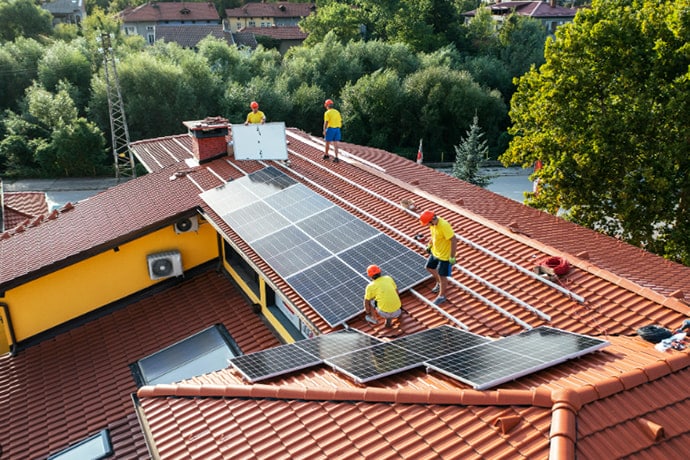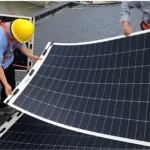As the world embraces renewable energy solutions, solar panels have emerged as a cornerstone of sustainable power generation. When it comes to setting up solar panels, the question of whether to connect them in series or parallel often arises. Series vs Parallel Solar Panels: Which is Better? Both configurations have their merits, and making an informed choice is crucial to maximizing the efficiency of your solar energy system.
Solar Panel Wiring – The Basics
At the heart of any solar energy system lies the intricate connection of individual solar panels. How these panels are linked together has a significant impact on the overall performance and efficiency of the system. There are two primary wiring configurations: series connection and parallel connection.
Solar Panels Connected in Series and Parallel: What Is the Difference?
2.1 Series Wiring:
In a series connection, solar panels are strung together sequentially, forming a linear chain. The positive terminal of one panel connects to the negative terminal of the next panel, creating a continuous circuit. This arrangement cumulatively increases the system’s voltage while maintaining a consistent current flow.
2.2 Parallel Wiring:
In a parallel connection, solar panels are linked side by side, sharing common positive and negative terminals. All the positive terminals are connected, and all the negative terminals are connected. This setup ensures that the voltage across the panels remains the same while the overall current capacity increases.
Series vs Parallel Solar Panels: Advantages and Disadvantages
3.1 Advantages of Series Connection:
Higher Voltage: Series connections deliver higher voltage levels, which can be advantageous when transmitting power over longer distances.
Efficiency: In specific situations where shading is not a concern, series connections can be more efficient.
3.2 Disadvantages of Series Connection:
Voltage Dependence: If one panel in a series experiences shading or malfunction, the entire chain’s performance can be compromised.
Uniform Current: The current across a series connection remains constant, meaning that if one panel produces less current, it affects the output of the entire array.
3.3 Advantages of Parallel Connections:
Independent Operation: Parallel connections enable each panel to operate autonomously. This ensures that if one panel is shaded or underperforms, the rest can continue generating power.
Scalability: Parallel configurations are more flexible for adding or replacing panels without affecting the entire system.
3.4 Disadvantages of Parallel Connections:
Higher Current: While parallel setups offer increased current capacity, they can lead to voltage drops over significant distances.
Complex Wiring: Managing multiple parallel connections can be more intricate than setting up a series configuration.

Solar Panel Shading
In situations where certain panels are intermittently shaded, a parallel connection is often the superior choice. With parallel connections, each solar panel operates independently. Even if some panels are under shade, the unaffected panels continue generating power. In contrast, series connections are more sensitive to shading, as shading one panel impacts the entire series, leading to a drop in overall energy production.
Hybrid Settings
Can’t decide which wiring method is best for you? You may find a hybrid setup ideal for your situation. A hybrid wiring method gives you the benefits of both series and parallel wiring. To start, wire multiple strings of solar panels together in series. Then, you can connect the multiple strings in parallel.
With this method, you increase the voltage of your setup when you wire panels together in series. Then, by connecting multiple strings of series-wired panels in parallel, you add the amperage values of each string together.
Essentially, when you opt for a hybrid setup, you can successfully enhance both the voltage and amperage in a way that you can’t when you wire in series or parallel alone.
Voltage and Current of Solar Panels Connected in Series and Parallel
In series connections, the voltage accumulates while the current remains consistent. In parallel connections, the voltage remains constant, and the overall current increases. Understanding these relationships is essential for designing an efficient and effective solar panel setup.
Series vs Parallel Solar Panels: Frequently Asked Questions
Q1: Can I combine different solar panel models in a series or parallel connection?
A1: Mixing panel models is generally discouraged, as it can lead to energy inefficiencies due to varying outputs.
Q2: Can I change my connection setup after installation?
A2: While it is possible to change the configuration, it can be complex and might necessitate rewiring and adjustments to the system.
Q3: Will my system’s efficiency be affected by my connection choice?
A3: Both series and parallel connections have their merits. The choice depends on various factors, including shading and available space.
Q4: How does the number of panels influence my decision between series and parallel connections?
A4: As the number of panels increases, parallel connections become more manageable. For longer distances, series connections may be preferred.
In conclusion, the decision between series and parallel connections hinges on several factors, including shading considerations, available space, and system scalability. By evaluating the advantages and disadvantages of each configuration and understanding their implications, you can make an informed choice tailored to your specific requirements. Ultimately, whether you prioritize independent panel operation or system efficiency, grasping the intricacies of series and parallel connections empowers you to construct a solar energy system that optimally aligns with your energy needs and environmental conditions.
Article source: Sungold
To learn more about solar panels, please click: https://www.sungoldsolar.com/
Learn more about:
How to Wire Solar Panels in Series Effectively: Unlocking Efficient Energy Generation







